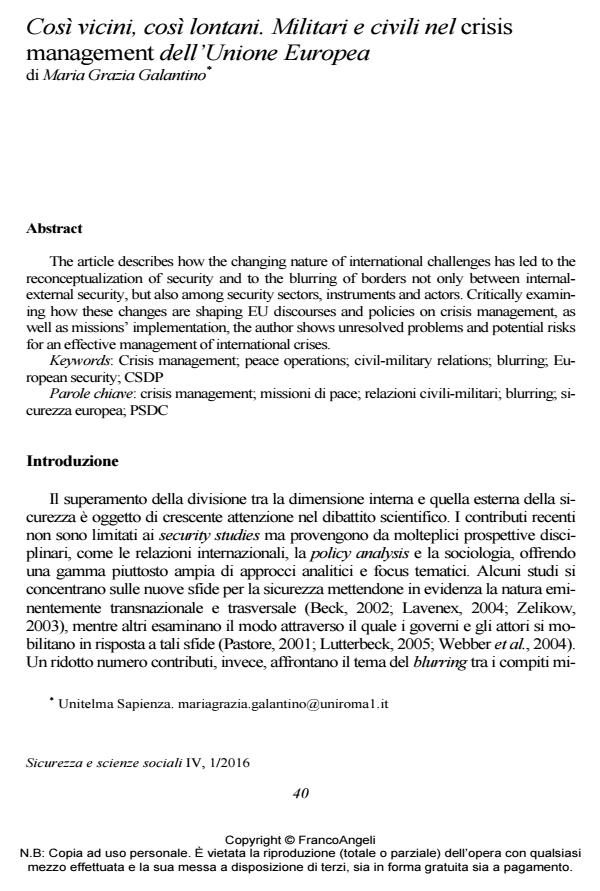Così vicini, così lontani. Militari e civili nel crisis management dell’Unione Europea
Titolo Rivista SICUREZZA E SCIENZE SOCIALI
Autori/Curatori Maria Grazia Galantino
Anno di pubblicazione 2016 Fascicolo 2016/1
Lingua Italiano Numero pagine 15 P. 40-54 Dimensione file 218 KB
DOI 10.3280/SISS2016-001004
Il DOI è il codice a barre della proprietà intellettuale: per saperne di più
clicca qui
Qui sotto puoi vedere in anteprima la prima pagina di questo articolo.
Se questo articolo ti interessa, lo puoi acquistare (e scaricare in formato pdf) seguendo le facili indicazioni per acquistare il download credit. Acquista Download Credits per scaricare questo Articolo in formato PDF

FrancoAngeli è membro della Publishers International Linking Association, Inc (PILA)associazione indipendente e non profit per facilitare (attraverso i servizi tecnologici implementati da CrossRef.org) l’accesso degli studiosi ai contenuti digitali nelle pubblicazioni professionali e scientifiche
The article describes how the changing nature of international challenges has led to the reconceptualization of security and to the blurring of borders not only between internalexternal security, but also among security sectors, instruments and actors. Critically examining how these changes are shaping EU discourses and policies on crisis management, as well as missions’ implementation, the author shows unresolved problems and potential risks for an effective management of international crises.
Parole chiave:Crisis management; missioni di pace; relazioni civili-militari; blurring; sicurezza europea; PSDC
- Migration as a risk for security. Risk frames in the Italian news on the Libya war and its aftermath Maria Grazia Galantino, in MONDI MIGRANTI 3/2018 pp.219
DOI: 10.3280/MM2017-003011
Maria Grazia Galantino, Così vicini, così lontani. Militari e civili nel crisis management dell’Unione Europea in "SICUREZZA E SCIENZE SOCIALI" 1/2016, pp 40-54, DOI: 10.3280/SISS2016-001004